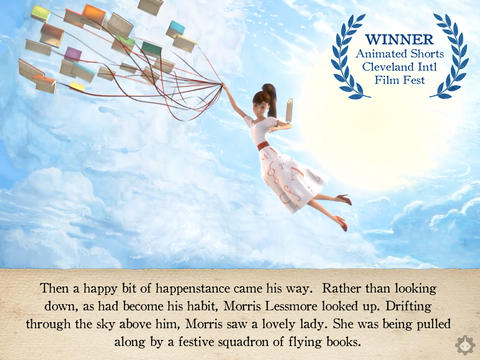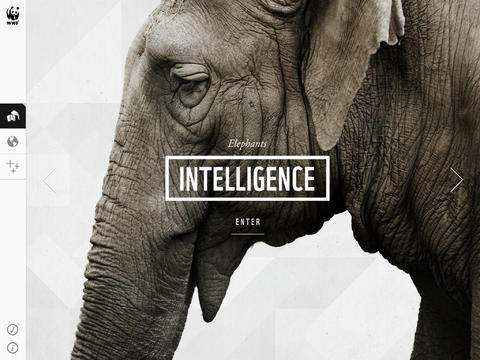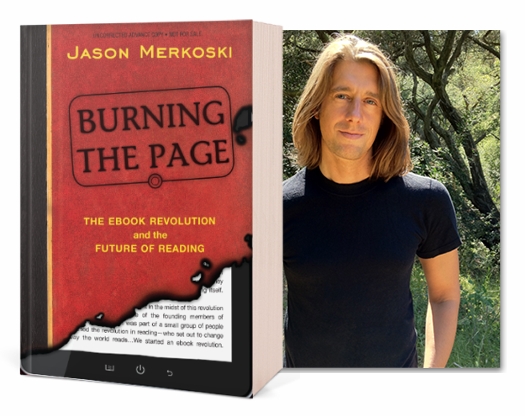The eBook Interview: Meagan Timney
What Academia and UX Design Can Teach the Commercial eBook World


Meagan Timney is a Senior Product Designer at Inkling. Before working in the private sector, she explored the future of the book at the University of Victoria as a postdoc and Assistant Professor of English literature and digital humanities. You can follow her on twitter @mbtimney.
Hi Meagan! Tell us about yourself and your background.
Hi! Well, my name is Meagan Timney, and I grew up and went to school in Canada. I moved to San Francisco about two years ago to begin working in the software industry as a product designer. In university, I studied literature and performing arts before heading to grad school and embarking on a multi-year digital preservation and scholarly editing project. I’ve been fortunate to watch the emergence of digital editions from both an academic and industry perspective. There have been a lot of changes to digital books since I built my first one (using simple HTML and frames) in the autumn of 2004.
What is something in the world of eBooks that you are currently excited about, whether a technology, a product, or an idea making the rounds?
I think what I’m most excited about is that publishers and authors are beginning to see the value of interaction design in the creation of digital books.
I think what I’m most excited about is that publishers and authors are beginning to see the value of interaction design in the creation of digital books. I think the publishing industry as a whole is now much more open to exploration and experimentation, which will lead to more innovation. It’s been wonderful to watch the percolation of the idea that we need to consciously design the next generation eBook experience. Peter Meyers’ idea of the “infinite canvas” and the “endless content terrain” of touchscreen devices is something I’m particularly drawn to because it’s one of those ideas that breaks the bounds of the printed page.
This blog is focused on next generation eBooks as opposed to traditional ‘plain vanilla’ eBooks. What do you think a next generation eBook should be?
That’s a tough question. I firmly believe that digital publishing can benefit from interaction design methodologies, and that the best next generation eBooks will be built on a solid foundation of user research, information architecture, interaction design, graphic design, and scalable technical infrastructure. As for what that looks like, well, obviously I think Inkling has been doing a great job on thinking through these big issues (disclaimer, I work there!). To me, the next generation eBook will be one that utilizes the best of digital affordances and the three-dimensional space of the touchscreen. Flat PDFs are not the future of the book.
What do you think are the most interesting next generation eBooks created so far?
The projects I find most interesting and forward-thinking are the hybrid-genre eBooks (they are sometimes indistinguishable from apps). There are too many to name here. The children’s book space offers some exciting examples, including one of my favorites, The Fantastic Flying Books of Mr. Morris Lessmore. The WWF “Together” app is great example of how next generation eBooks could support navigation and dimensionality. I also think Inkling’s The Professional Chef offers a glimpse of the future of the cookbook, and NYPL’s Biblion shows how we might organize digital content and provide meaningful containers for that content. Oh, and of course, I can’t forget to mention Touch Press’ The Wasteland.


You spent time in the Text Encoding Initiative (TEI) community in the academic world. Tell us more about what TEI is and what it can teach us about the future of eBooks.
TEI is to digital humanists what the EPUB format is to publishers.
The Text Encoding Initiative is a standards-based consortium that provides guidelines for the markup and representation of digital texts. TEI is to digital humanists what the EPUB format is to publishers. They are both, at their core, standards-compliant XML that allow for the semantic markup of texts. I think the TEI has done great things for scholarly editing, and it provides comprehensive tag sets for many different genres. I’d argue that standards-based XML (whether TEI or EPUB, or other emergent formats) will help us with the preservation of history and literature and provide a solid footing for the next-generation eBook. (I’d recommend checking out Nick Disabato’s Publication Standards Project for more info on this line of thinking). However, TEI itself is just another markup language. Scholars are definitely domain experts on the corpus that they are encoding, but they aren’t necessarily technical experts, so sadly, many incredible projects are languishing in a semi-encoded state. The challenge that scholars face is how to work with a scalable system that will make their TEI-encoded texts meaningful, beautiful, and available to a wider audience.

What do you think are some of the most exciting ‘future of the book’ initiatives in academia that the commercial eBook world should know more about?
The Digital Humanities Summer Institute is training scholars to think about the how best to represent knowledge digitally. I was involved with the Editing Modernism in Canada project for many years, where we spent a lot of time thinking about the future of the scholarly edition. I think the time is coming when there will need to be stronger partnerships and visibility among academics and industry in order to determine what our future reading experiences will be like. I’m not a big fan of silos; we should be leveraging each others’ strengths.
You recently joined us over at Inkling. What do you find exciting about what we are doing and why did you join?
I joined because I think Inkling is really leading the charge towards a new generation of digital reading experiences and knowledge creation processes, and I wanted to be a part of it. Not only are we solving big issues related to the future of the book, but we’re doing it at scale.
I love working at Inkling! Everyone on the team is so smart and passionate about digital reading experiences. I joined because I think Inkling is really leading the charge towards a new generation of digital reading experiences and knowledge creation processes, and I wanted to be a part of it. Not only are we solving big issues related to the future of the book, but we’re doing it at scale. One of my favorite things about my job is that I actually get to talk to people who use our products, and truly understand the positive impact we’re making in their lives.
You have a strong background in design and user research. How do you think this can inform us as we create next generation eBooks and “digital reading experiences”?
Well, if we consider that digital books are essentially websites (i.e. books wrapped in a web browser) or applications, then it follows that digital publishing stands to benefit from interaction design methodologies. I think that there are a lot of processes that we can take from design and apply them to publishing. Understanding our readers is critical to the development of impactful digital reading experiences. (I spoke on this topic at the TOC conference in February). We can use empathy-driven design principles to tap into our readers’ love of reading and to understand their connection to the materials they are engaging with. User research helps us to discover these thoughts and feelings so that we can design next-generation experiences that are both edifying and delightful.

Do you think the physical page metaphor has any true future with next gen eBooks? What do you think of Inkling's card metaphor?
The page metaphor does have a place until we can design experiences that are properly digital (readers still read digital books as though they were physical). We can never replicate the physical book digitally, and I don’t think the point is to try. I don’t think print is going anywhere, so why should we try to make our digital books the same? The danger in digital remediation is that we aren’t taking advantage of all technology has to offer; it’s a very conservative model. We have to look beyond the printed page for new affordances that readers are unfamiliar with, and build a scaffolded experience to help usher them into new ways of consuming information. We should be thinking about the next generation eBooks as born digital, even if the content also exists in printed format. I think the card metaphor is a good one. It’s a form of scaffolding and supporting digital reading experiences. Cards allow for defined structure and constraint, but also flexibility and interactivity, they can be organized in different containers than the one we call a “book”. Cards are a great place to start thinking about next-generation digital content.
What do you see as the single most important thing we as an industry need to do around eBooks?
As I noted above, I think developing a standards-based, scalable method for encoding texts will go along way towards legitimizing next generation eBooks. Once you have the foundation, you can build anything on top of it! The sky (well, and the technology you have to hand) is the limit.
What’s a question I didn’t ask that you wish I had?
In terms of resources on the future of the book, I’d recommend Darnton’s The Case for Books (Public Affairs, 2009), McGuire and O’Leary’s Book: A Futurist’s Manifesto (O’Reilly, 2012), and Merkoski’s Burning the Page: The eBook Revolution and the Future of Reading (Sourcebooks, 2013). I’m also looking forward to the publication of the full edition of Peter Meyers’ Breaking the Page.

Thanks Meagan!
Subscribe to my RSS feed and follow me on Twitter to stay up to date on new posts.
Please note that this is my personal blog — the views expressed on these pages are mine alone and not those of my employer.